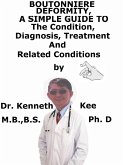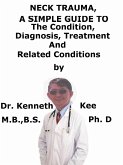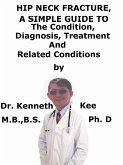A swan neck deformity is present on my right small finger probably due to an injury.
Anyway it is mild and does not cause any problem so I left it alone.
Swan neck deformity is the deformed condition of the finger, in which the joint that is closest to the fingertip is permanently bent toward the palm while the nearest joint to the palm is bent away from it (DIP flexion with PIP hyper-extension).
It is often produced by injury or inflammatory disorders like rheumatoid arthritis or sometimes familial (congenital, like Ehlers-Danlos syndrome).
For a swan neck deformity to happen, abnormal stress must be placed on the ligament around the PIP joint of the finger.
The stress induces the ligament to release, which then produces hyperextension of the PIP joint.
As a result, the PIP joint bends in towards the palm.
At the same time, the joint furthest from the palm (DIP joint) pushes the fingertip to point towards the palm.
The abnormally bent fingers in a person with swan neck deformity may make it difficult for him or her to grasp objects or make a fist.
The limited movement may be categorized as a disability, as the person has lost some fundamental functions of the fingers and hands.
Swan neck deformity (SND) involves the fingers.
It happens when multiple joints in the fingers curve in unusual positions due to a health disorder or injury.
Swan neck deformity involves:
3 finger bones (phalanges)
2 inter-phalangeal joints, above the knuckle
Tendons
Ligaments
SND happens when the two inter-phalangeal joints point in unusual directions and cannot straighten into a flat position.
The middle joint of the finger may hyperextend, or bend upward.
This joint is termed the proximal inter-phalangeal (PIP) joint.
The end joint of the finger may also flex or bend downward.
This joint is termed the distal inter-phalangeal (DIP) joint.
The patient can only get Swan neck deformity in the fingers, but not affect the thumb.
The patient may also end up with mallet finger if just the end joint of the finger bends down.
Rheumatoid arthritis (RA) is the most frequent disease involving the PIP joint.
Chronic arthritis inflammation of the PIP joint places a stretch on the volar plate.
The volar plate is a supportive ligament in front of the PIP joint that normally stops the PIP joint from hyper-extending.
When the volar plate deteriorates and becomes stretched, the PIP joint becomes loose and starts to easily bend back into hyperextension.
The extensor tendon becomes out of balance, which permits the DIP joint to get pulled downward into flexion.
When the DIP joint flexes and the PIP joint hyper-extends, the Swan neck deformity happens.
Swan neck deformity can be caused by:
1. Rheumatoid arthritis (RA)
2. Cerebral palsy
3. Scleroderma
4. Psoriatic arthritis
5. Stroke
6. Parkinson's disease
7. Some genetic disorders eg. Ehlers-Danlos syndrome
8. Trauma to the hand:
a. Untreated mallet finger caused by injury
b. Poorly healed fracture in the finger
c. Other direct trauma to finger that has weakened the ligaments around the PIP joint
d. Nerve damage that produces muscle spasms
e. Severely jammed finger tip
f. Tightened hand muscles due to injury
g. Looseness of the fibrous plate inside the hand at the base of the fingers
h. Loose finger ligaments
i. Ruptured finger tendon or tendons
Physical or occupational therapy includes exercises, stretches, and massage to help the fingers improve balance and regain strength and mobility.
Surgical Treatment can be:
Soft Tissue Repair
Finger Joint Fusion
PIP Joint Arthroplasty...
Dieser Download kann aus rechtlichen Gründen nur mit Rechnungsadresse in A, B, CY, CZ, D, DK, EW, E, FIN, F, GR, H, IRL, I, LT, L, LR, M, NL, PL, P, R, S, SLO, SK ausgeliefert werden.









